The next day we took a day trip to Gibraltar. "The Rock" is distinctive, although we never got the familiar perspective from the Prudential logo.
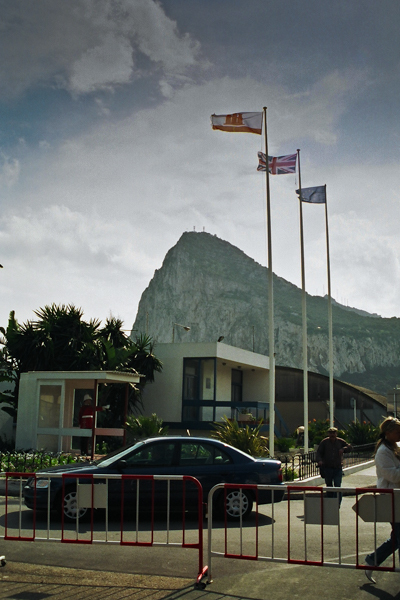 In high season
the border crossing from Spain into Gibraltar, which is British territory,
can take hours.
There was plenty of space for busses and cars to wait, but we zipped
right across. Another complication is that the access road crosses
the airport runway. The planes have precedence!
In high season
the border crossing from Spain into Gibraltar, which is British territory,
can take hours.
There was plenty of space for busses and cars to wait, but we zipped
right across. Another complication is that the access road crosses
the airport runway. The planes have precedence!
Although Gibraltar was ceded "in perpetuity" to Britain in 1713, Spain continues to assert sovereignty over the territory. Nevertheless, the inhabitants choose to remain a British dependency.
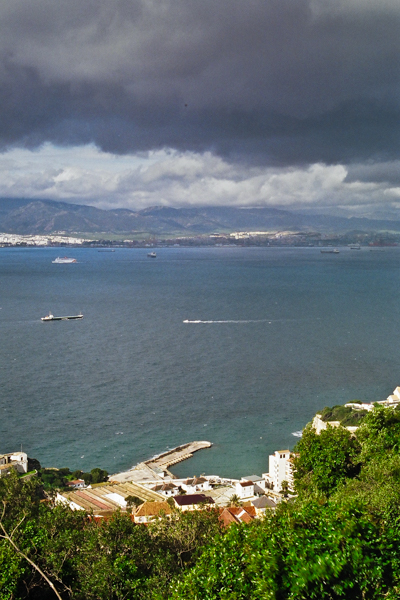 Looking across the Bay of Gibraltar (or Bahía de Algeciras,
depending on your perspective) toward the Spanish port of Algeciras.
We will depart from this port for Morocco on the following day.
Looking across the Bay of Gibraltar (or Bahía de Algeciras,
depending on your perspective) toward the Spanish port of Algeciras.
We will depart from this port for Morocco on the following day.
The jetty at the base of the mountain is part of an extensive British repair station for naval vessels.
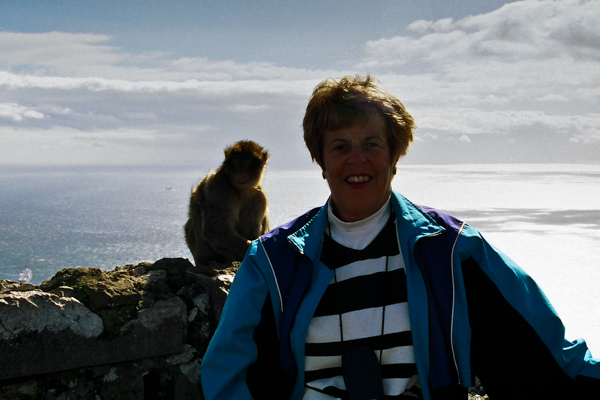 One
of the reasons to travel all the way to the top of the rock is to see
the resident
Barbary macaques. While I was taking this picture, Sue was very
anxious that I get it over with so that she could move away from the
critter (she wasn't actually standing close to it in spite of the
appearance). They could be aggressive to be sure and were very
agile. A little later
one jumped on my back from quite a distance away! No harm done to me
or monkey although it was QUITE startling.
One
of the reasons to travel all the way to the top of the rock is to see
the resident
Barbary macaques. While I was taking this picture, Sue was very
anxious that I get it over with so that she could move away from the
critter (she wasn't actually standing close to it in spite of the
appearance). They could be aggressive to be sure and were very
agile. A little later
one jumped on my back from quite a distance away! No harm done to me
or monkey although it was QUITE startling.
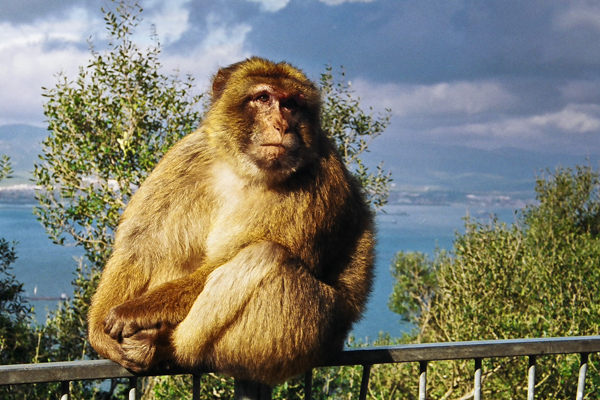 Hamming it up for the tourists.
Hamming it up for the tourists.
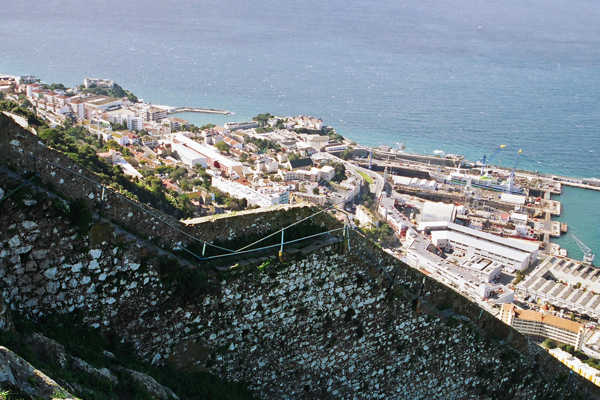 We
rode to the top of the rock in taxis, but it is possible to climb
these intimidating Mediterranean Steps. At the time of our visit they were posted as
unfit for use, but have since been repaired.
We
rode to the top of the rock in taxis, but it is possible to climb
these intimidating Mediterranean Steps. At the time of our visit they were posted as
unfit for use, but have since been repaired.
There is also a cable car to the top.
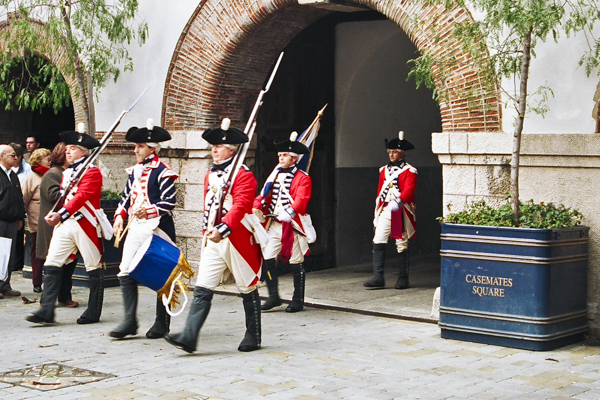 Make
no mistake about it, Gibraltar is British. And in the tourist business.
At regular times during the day there is a "changing of the guard"
with red-coated regalia.
Make
no mistake about it, Gibraltar is British. And in the tourist business.
At regular times during the day there is a "changing of the guard"
with red-coated regalia.
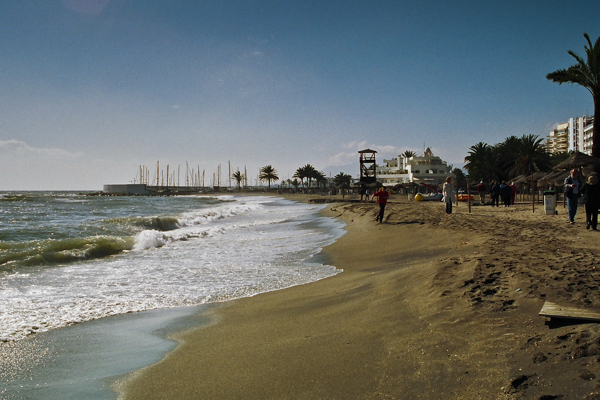 On
our way back to our hotel, we made a stop in one of the resort
cities to dip our toes in the Mediterranean. I expect this beach is
a bit more crowded during "the season."
On
our way back to our hotel, we made a stop in one of the resort
cities to dip our toes in the Mediterranean. I expect this beach is
a bit more crowded during "the season."
Click your "back" button to return to the previous page or click for our picture album